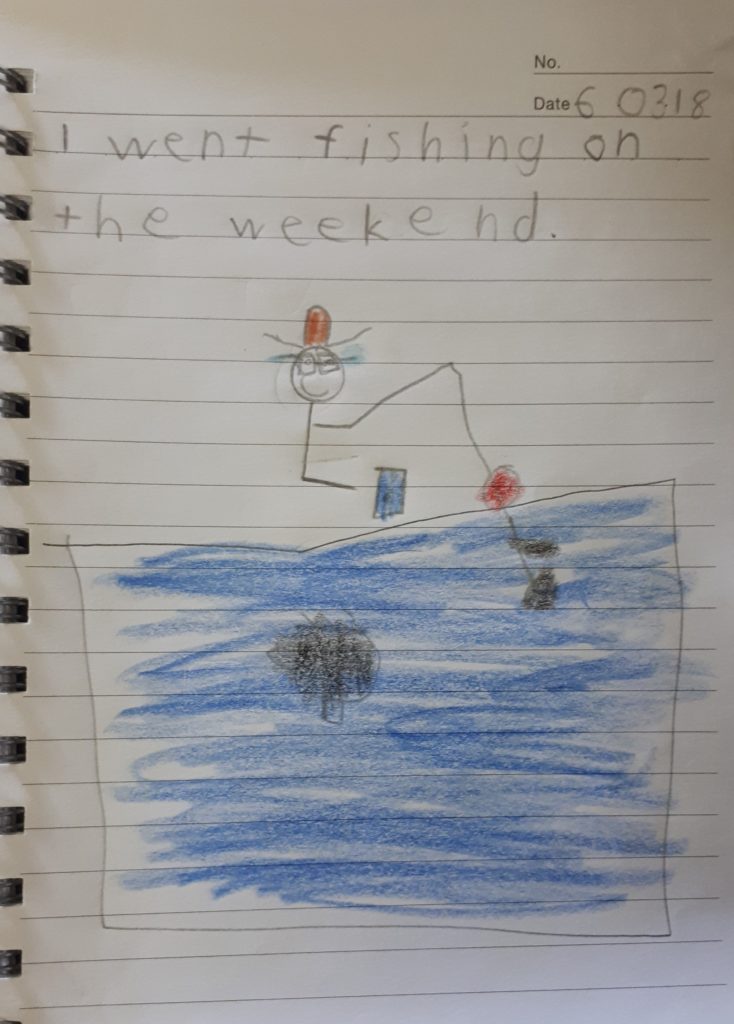
The saying goes: ‘WITHOUT A GOAL YOU HAVE NOTHING!’
- Goals can make you scared… –Hey, that’s the challenge!
- Goals are put in place to give focus, guidance and direction.
- Everyone needs goals and children are never too young to start setting goals for themselves.
- Goals are a great way to help children take control of their studies, sports and other activities.
- Breaking down the school’s yearly program, into bite size goals, makes achieving these goals more manageable for a child.
GOALS BREED CONFIDENCE.
‘People with goals succeed because they know where they are going. -It’s that simple.’ Earl Nightingale.
There are three types of goals: Small, Medium and Long Term Goals.
- Goals need to be written down and be visible at all times.
- A goal means nothing, unless it’s written down.
- Think: SMART. (Specific, measurable, attainable, realistic, and timely).
- This will keep you focused.
- There is a great sense of achievement, once a goal is achieved and deleted.
As my children are still young, I help them set and monitor their goals. They then delete them, once they have been achieved. This certainly helps boost their confidence and give them a feeling of self-worth.
1. Small term goals are your daily, weekly and monthly goals.
At the beginning of each week we discuss our academic, creative and sporting goals for the week, so that we all know where we are heading…
We break down our academic goals into daily goals. These goals are written down and displayed on each child’s desk. These goals guide us through the day and are achievable, most of the time…
Occasionally goals change, due to sickness, work difficulties -or when spontaneous opportunities arise. These small term goals are never set in stone, but are there simply as a guide.
2. Medium term goals.
Medium term goals are our yearly goals. The yearly goal is to ensure that our children grow in knowledge and confidence, in step with the increased academic requirements for that year.
At the beginning of each year the children set their yearly goals. They don’t have a huge number of yearly goals. Most centre on completing their academic year, plus sporting activities and recreational goals. My job is to try and guide them towards realistic, achievable goals, which require a level of hard work and dedication. The idea is to open the child’s mind to the realization that they can achieve whatever they set their minds to. Obviously the children need continued guidance.

Example: Last year, my then 6 year old, Murray John, asked me one day- ‘How come a little girl could publish a book about her pony?’ -My reply, ‘Anyone can publish a book, if they want to’. Murray John then added, ‘I would love to publish a book!-‘Best you write your diary sentence every week this year and then we shall publish it.’ I replied. -He thought that was a great idea! Murray John then set ‘writing a book’ as one of his goals for the year. His diary is now complete and waiting to go to the publisher… Simply put; By breaking down the steps towards writing a book, into small weekly steps, has made writing a book achievable for a six year old and has resulted in a great sense of achievement and self-worth.
3. Long term goals.
As with everything, there must be a long term goal. The goal posts may move, between now and when reaching those long term goals, however, they need to be set, in order to give focus and direction. I like to explain to my children the reasons why we do each subject and sporting activity, – and what we hope to achieve in the long term.
If their goal is for a scholarships to college or university, they need to start working on what needs to be done now, in order to achieve this long term goal. It may take more work and extra time, but they can achieve it, with realistic short and medium goals, which will keep them focused and give them direction.
Relating the individual subjects the children are learning, to everyday life, also helps them realize that today’s studies will move them towards their desired future.
For example: Each week we do an outing around the farm, to discuss one of the crops. I try to incorporate the school subjects in our discussion, so that the children understand that what they are learning in school will help them later in life.
Goals do need to be flexible, as circumstances can change, but long term goals need to be more rigid. It may take extra time to reach the long term goal, which is fine…but the long term goal should remain the same…
Goals are always a positive thing:
Goals need to be embraced, in order for one to stay positive. Set the goal standards reasonably high and repeat them to yourself often. This is positive reinforcement and helps bring meaning to it all.
Even when a goal is not achieved, it should not be regarded as a negative thing. Simply regard it as a learning experience and focus on the fact that it can be achieved next time.

Example: My daughter Paula Joy wanted to win her tennis tournament, but the growing pains in her legs became so severe, she could not compete. Together we simply moved her goal forward to the next tournament and focused on looking forward, -not back.
NO GOAL IS TOO SMALL.
Each goal gets one further up the ladder towards the long term goal. I believe that God gives us dreams and desires for a reason. Embrace them and turn the dreams into goals, then…
- Pray about your goals
- Write your goals down and display them.
- Strive to achieve them.
“YOU WILL WIN OR YOU WILL LEARN- YOU NEVER LOSE OR FAIL!”
Happy goal setting! Be a winner…
‘The Lord will guide you always’. Isaiah 58:11.
Prayer: Heavenly Father, please guide us through each and every goal we set. May our goals be from You and directed by You. Thank you for your Word, which states that You will guide me always. Amen.
- Developing Life Skills through a Houseboat Adventure.
- Our Homeschooling Adventures and Activities for Jan-Feb 2024.
- How Horse-shows Grow and Develop Our Children’s Characters.
- Our Fun and Fantastic Cape Town Experience.
- Our Homeschooling Adventures and Activities for Nov-Dec 2023.
Please let us know about your goals and comments below….





[…] How to Create and Achieve Your Child’s Goals through Homeschooling. […]
[…] Read; How to Create and Achieve Your Child’s Goals, to help you with your goal planning. […]
[…] children have reached their academic goals for the year, so we took a week’s break and called it ‘Friendship […]
[…] is not only about curriculum’s, reaching goals and earning degrees. It should also be about preparing children for life and its enormous […]
[…] What I really enjoy about the ACE program, is that it is so easy to pick up again exactly where one has left off. This makes it easier for the children to get going again after a break. As the children get older, so they are starting to take more control of their studies. Paula Joy now knows how to set her daily goals. […]
[…] so Douglas and I were determined to have them included in the game, as much as possible. Our goal was to coach the children and develop their game sense, bearing in mind that we were playing […]
[…] began with another lockdown. It is always so sad, when sports are cancelled and goals have to be adjusted accordingly. We had some polo tournaments and the annual pony club show […]
[…] school day starts with prayer, before starting Mental Maths, followed by checking their ACE academic goals for the day. Then it is time for Maths, followed by their other subjects. […]
[…] enjoy keeping the children stimulated, by varying their time table. We nearly always reach our homeschooling goals, but enjoy being flexible. Planning for variations in programmes is a valuable life skill for the […]
[…] the children keep up to date with their school work. They have now both learnt how to manage their monthly goals, even if it means doing school on […]
[…] love the flexibility homeschooling gives us, however, it takes discipline to keep the academic goals on […]
[…] Paula Joy, at the very young age of just 12, managed to make the team! What an achievement and she was thrilled! She can certainly bowl almost as fast as the older girls and also loves playing an attacking batting game. […]
[…] of illness and hospital stays, meant that I was restricted to staying in Harare. The children’s schooling and sporting goals needed serious adjusting, to avoid the normal travelling back and forth, between town and the […]
[…] personal goals had to be sidelined… However, as long as the children achieved their goals, that’s all that really mattered, as holidays and opportunities can always be arranged […]
[…] harder and understand what they are aiming to achieve, whilst minimising any later frustrations. Short, medium and long term goals are part of everyday life and it’s never too early to start identifying […]
[…] It’s amazing how measuring goals helps the children to focus on future goals and dreams. […]